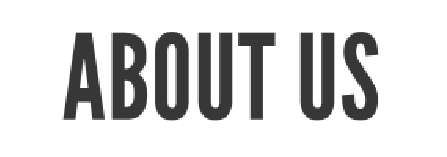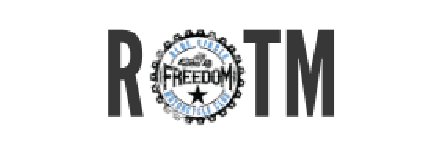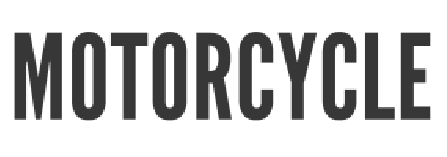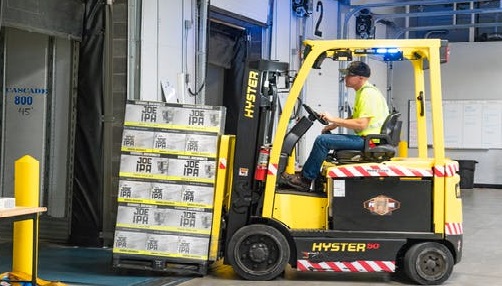Saturday, 29 September 2018
Wednesday, 26 September 2018
October Is Cyber Security Month!
Yes, "cyber crime" is such a prevalent activity that we now have the distinction of an entire month dedicated to raising awareness about the issue and educating people on how to avoid becoming the victim of this unscrupulous act.
I've done several posts on this very topic, including "How Serious Is The Scourge Of Cyber Crime Becoming?", "This Means (Cyber) War", and "Cyber Security For The Kids And Teens". Still, many people are unaware of just how many types of cyber crime exist, the names and terminology that relate to them, or proactive steps and protocols needed to stop yourself from falling prey to cyber criminals.
Here are 5 common types of cyber crime of which to be aware, and a few tips on ways to avoid becoming an easy mark.
- Phishing: a fraudulent attempt, typically by e-mail, to steal your personal information or get you to participate in some activity that sees the transfer of money to the perpetrators.
- Watch for generic greetings, forged links contained in the e-mail, requests for any personal information, all usually with some sense of emergency.
- Malware: also known as malicious software, are programs or files that are harmful to a computer user and can include computer viruses, worms, Trojan horses and spyware.
- Always check domains of log-in pages to confirm accounts and ensure security by implementing updates frequently and storing passwords in locations such as password managers.
- Scams: a deceptive or fraudulent act that has a special offer or deal for the targeted victim, like the "too good to be true" scenario.
- Just like the saying, if it sounds too good to be true, it probably isn't and you should be immediately suspicious.
- Identity Theft: criminals take personal information about a person and use it to set up credit cards in your name or hack into your bank accounts and steal your money.
- Be very careful about what personal information you share on social media or other websites, and do not send any of this type of information in e-mails, as they can be intercepted by savvy criminals.
- Ransomware: just as it sounds, cyber criminals take control of websites and demand ransom payments to have them released.
- Use the same precautions as you would in Phishing protection, plus have a date recovery plan and back up your data regularly.
Did you know that you can get various degrees of insurance coverage to protect you and your business from cyber crime. Check out the offerings at BlueCircle and speak to one of their knowledgeable brokers.
For more detailed information on cyber crimes and proactive ways to protect yourself, use the handy search bar on the main page of this blog and type in cyber crime.
As well, check out the BlueCircle blog page for our post about this topic.
As well, check out the BlueCircle blog page for our post about this topic.
Wednesday, 19 September 2018
E-Mail Spoofing
So, the following is purportedly a real case scenario that actually was successful in scamming a substantial amount of money from a business.
The names and dates were changed but it is a good example of just how an e-mail spoof works. I know because some fraudster tried it on me just recently. They sent an e-mail and claimed to be our company president needing help to transfer money on their behalf. "Just use the company credit card or pay it yourself and I'll pay me back later" they stated.
From: John Doe
Sent: Tuesday, 15 Aug 2018 10:21 AM
To: Jane Smith
Subject: Urgent Attention
Are you available to handle an international payment this morning?
Have one pending, let me know when to send bank details.
Regards
John Doe
Sent from my iPhoneOn Tuesday, 15 Aug 2018 at 11:33 AM,
Susan Brown wrote:
Hi John,
Sorry was caught up with a project - I'm here now - can I still help?
Jane Smith
DirectorOn Tuesday, 15 Aug 2018 at 12:29 PM,
John Doe wrote:
Can you still handle this right now? was very busy earlier.
Regards
John Doe
Sent from my iPhoneOn Tuesday, 15 Aug 2018 at 2:01 PM,
Jane Smith wrote:
Hi John,
Just back - can do it for you now if that will help.
Jane Smith
DirectorOn Tuesday, 15 Aug 2018 at 3:48 PM,
John Doe wrote:
Yes it seem to be a very busy day. The amount is for $30,120 i am guessing it is very late already for the transfer or can you still get it done today?
Regards
John Doe
Sent from my iPhoneOn Tuesday, 15 Aug 2018 at 4:10 AM,
Jane Smith wrote:
Hi John,
Is it set up ready to go in PC banking? I can't see it there to authorise under international?
Cheers,
Jane SmithOn Tuesday, 15 Aug 2018 at 4:56 PM,
John Doe wrote:
Oh ok, please find a way around it, my day is really tied. Can i send you the bank details today still? Can the payment still go out?
Regards
John DoeOn Tuesday, 15 Aug 2018 at 5:05 PM,
Jane Smith wrote:
Hi John,
I can do my best but will do it from home tonight as have to leave theoffice now. Think they still go to 8 pm or so.
Send me all the details and I'll try but usually Mary sets them up and we just authorise them. Will see what I can do - it's no trouble as I know I can ask Mary from her home if necessary.
Leave it with us.
Regards
Jane Smith
DirectorOn Tuesday, 15 Aug 2018 at 5:12 PM,
John Doe wrote:
Ok then. Thanks
NAME: Acme
SORT CODE: 12341234
ACCOUNT: 123412341234IBAN: ABCD123412341234123412341234
SWIFT ABC:ABCD1234BANK: SOME BANK
ADDRESS: 3 Somewhere Place
Send me payment slip once it is completed.
Regards
John Doe
Sent from my iPhoneOn Tuesday, 15 Aug 2018 at 5:14 PM,
John Doe wrote:
Please use this IBAN number for the account.
IBAN: ABCD12341234123412341234123412341
Ensure to send me the slip once its done. Thanks
N.B: confirm receipt of the new IBAN number.
Regards
John Doe
The first red flag would be the fact that someone is asking you to send them money. Even if this was a legitimate request, this should not be your company's protocol when dealing with money matters.Red flag number two would be the urgency of the request. Obviously, the perpetrators want you to hurry and not have a chance to actually consider what is going on and start to ask questions. This is a typical pattern when fraudsters pull these sorts of scams.
Never rush when dealing with financial matters, and always err on the side of caution. Develop strong company protocols for dealing with money and train employees properly, to avoid mistakes like the one in the scenario above.
Saturday, 15 September 2018
Encryption
If encryption is outlawed, then bayl bhgynjf jvyy unir cevinpl!
Not too difficult to figure out this encryption of course, being such simple and well know letter substitution, but that's hardly the point. Food for thought, none the less.
Wednesday, 12 September 2018
U.S Dollars Funding Canadian Environmental Groups
So, I just read an interesting article on HuffPost and thought it was well worth sharing, since I've always had a suspicion that some of our so called friends south of the border have been up to no good and are committing economic espionage and sabatoge within our oil industry.
Have a read of a HuffPost article by Vivian Krause's describing some of the shenanigans going on in the U.S. and Canada, all designed to keep our oil industry stagnating and allow U.S. interests to grow. Krause followed the money and found some damning proof about this dirty business.
Wednesday, 5 September 2018
Common Accidents And Safety
There's no doubt that work sites can be dangerous and having the right kind of liability insurance is a must, but nothing can replace the proper safety protocols and procedures that use a pro-active approach to preventing accidents from occurring in the first place.
Our business partners and premier insurance providers at Aviva Insurance shared the following graphics and provided the content written below, with the intent of educating the public about these far too common incidents which affect so many aspects of our personal and work lives each day.
Slips, Trips And Falls
Causes: Slips and trips cause two-thirds of the 42,000 falls suffered by workers each year. Spills, weather hazards and loose mats are frequent causes of slips, while trips are often the result of obstructed vision, poor lighting, clutter or uneven walking surfaces.
How to prevent: Most hazards are easily avoidable with consistent attention to detail and proper maintenance of your work site. Use signage to indicate wet areas and promptly clean up spills. Ensure work areas are clear of tripping hazards and have adequate lighting. Make it imperative that your employees wear properly fitted footwear with appropriate anti-slip soles for their work conditions.
Falls From Heights
Causes: 18% of all workplace fatalities are the result of falls from heights. Inadequate safety protection, misused or poorly maintained equipment, and poorly lit or messy work areas are the causes of most falls from heights.
How to prevent: Protect your workers and reduce your company’s liability by properly maintaining equipment such as scaffolding, platforms and ladders, and training your workers to use them correctly. Install physical barriers, such as guardrails, on elevated areas, and protect openings such as skylights. Keep work areas clear and ensure adequate lighting.
Struck By Moving Vehicles
Causes: Struck-by and caught-in accidents caused 13% of all workplace fatalities in the last 10 years. Many of these accidents are the result of workers being struck by vehicles or equipment. Poor training, obstructed vision on the part of operators, and lack of high-visibility clothing for workers can also put your workers at increased risk.
How to prevent: To ensure safety, your employees should avoid operating vehicles in reverse, or use reverse alarms and ensure that they are aware of and compensating for blind spots. Use signalers and warning/detection systems, and post signs in high traffic areas to warn workers.
Hit By Flying Or Falling Objects
Causes: Over 50,000 workers were injured and 81 died from contact with flying or falling objects or equipment in 2016. Workers are most at risk while working under cranes, scaffolds and other overhead equipment.
Causes: Over 50,000 workers were injured and 81 died from contact with flying or falling objects or equipment in 2016. Workers are most at risk while working under cranes, scaffolds and other overhead equipment.
How to prevent: Creating exclusion zones is a critical safety measure, particularly when large objects are being moved. Wearing appropriate personal protective equipment (PPE), including eyewear and hardhats, can save lives. The use of toe boards, debris nets and properly securing items when working at heights can also help prevent accidents.
Electrocution
Causes: Electrical injuries occur less often on work sites but they are the most fatal. In fact, 1 in 5 critical injuries and 1 in 18 non-critical injuries involving electricity result in death. The danger comes from both electrical shock and arc flash. Most electrical accidents are the result of improper maintenance or grounding of the equipment, unsafe operations around power lines and conductors, overloaded circuits, or exposed electrical parts or improper wiring. 70% of accidental contact with power lines in the past 10 years has occurred at construction sites.
How to prevent: Avoid storing equipment and machinery under power lines, as high voltage electricity can travel through the equipment causing electrical shocks. Warning signs should be posted and visible at night and in all weather conditions. Having a signal person in place when moving equipment around power lines and conductors can prevent accidents, as well as ensuring that workers maintain a minimum clearance from overhead electrical wires and power lines when working on ladders and scaffolds. PPE for those working with or around electricity should include Class E hardhats and safety boots designed to prevent electrical shock.
Protect your workers and your business with the right protocols and safety procedures, and the proper insurance coverage.
Preventing accidents should be your first line of defence against workplace accidents. But in the event of accidents, your second line of defence is being protected with adequate insurance coverage. A province's governing Health and Safety Insurance Board, like the WSIB in Ontario, will cover most workplace injuries, but the type of workers eligible for this coverage can vary, particularly outside of Canada.
Ensure your subcontractors have sufficient commercial general liability (CGL) insurance coverage and are paying into their provincial Health and Safety Insurance Board. Wrap-up liability insurance can also minimize risk as it provides shared and uniform liability coverage for both the contractor and subcontractors.
Saturday, 1 September 2018
BS4
There are "trikes" and other three wheel "motorcycles", such as the Can-Am "Spyder" and the Polaris "Slingshot", but check out this unusual Brough BS4, a shaft driven bike that is quite a different breed when it comes to 3-wheeled motorcycles.

The first shaft driven motorcycles were produced in 1901 by Fabrique Nationale de Herstal (FN) out of Belgium, soon followed by BMW in 1923. But, George Brough upped the ante quite a bit by using a modified Austin automobile engine and connecting the drive shaft to a final drive gearbox placed between two close coupled rear wheels.
Check out the old poster, advertising the Straight Four (S4). And what about that price tag of £188. That would equal Can $314, but of course by the standards of 1932 it would be the equivalent of £12,745 or Can $22000 approx.
Now, having a three wheeled motorcycle in the form of a trike, or a reversed version like that in the Spyder and Slingshot, is one thing but when I see this bike and the close fit of the rear two wheels it makes a guy wonder how that would affect the handling of the bike. Maybe less of a factor on the version with a side car but how about the straight up version and its' cornering abilities?
Regardless of the above conversation, Brough sure did make some interesting bikes and they're one of the best looking motorcycles in that vintage style, in my opinion.
Subscribe to:
Comments (Atom)

























